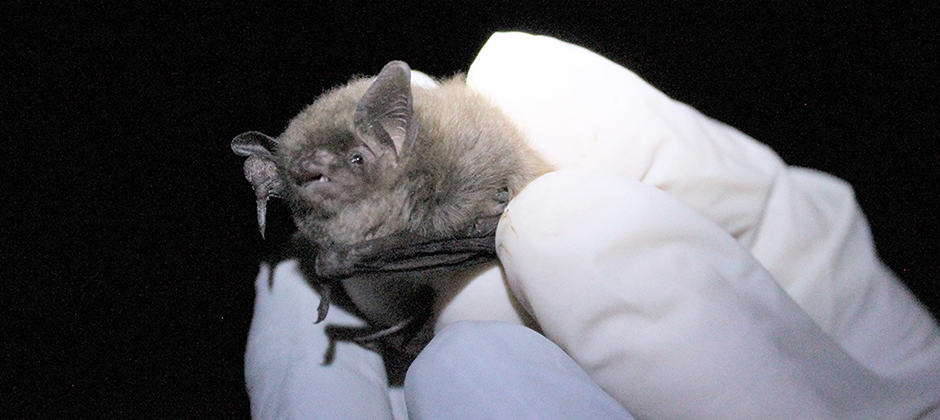Share this article
Forest management doesn’t stop Indiana bats from foraging
Imperiled bats in Indiana face plenty of challenges, but for two listed species, low-impact logging doesn’t seem to be one of them.
While previous research had shown that federally endangered Indiana bats (Myotis sodalis) and threatened northern long-eared bats (Myotis septentrionalis) continued to roost in areas that had been logged, it hadn’t looked at how individual bats foraged in them.
“We were missing half the picture,” said Joy O’Keefe, an assistant professor and wildlife extension specialist in natural resources and sciences at the University of Illinois.
The devastating disease white-nose syndrome, which has wiped out colonies of bats in parts of the United States, has driven declines both in Indiana bats, which were one of the first species listed under the Endangered Species Act, and northern long-eared bats, which were recently listed due to white-nose syndrome.
After watching both species decline in parts of their ranges, O’Keefe wanted to find out more about how forest management might be impacting them. While at Indiana State University, O’Keefe and lead author PhD student Timothy Divoll conducted a study, published recently in Forest Ecology and Management, looking into how forest management may affect their foraging. They hoped the research would expand on findings about roosting behavior and aid in the bats’ conservation.
“When we’re thinking about how to manage habitat for both of these bats, we need to conserve both their roosting and foraging habitat,” said O’Keefe, the principal investigator of the study.
To conduct the research, the team tagged bats to determine where they were foraging, and they tapped into the Hardwood Ecosystem Experiment, a 100-year study on forest management on two Indiana state forests, with data on forest treatments and how birds, mammals and insects responded.
They found that the two bat species used the landscape somewhat differently. Indiana bats foraged over larger areas and used open areas and patches cut into the forest more than northern long-eared bats. That makes sense, O’Keefe said. Indiana bats likely feed on swarms of insects in the air, so they need large, open spaces. Northern long-eared bats mainly take prey from the surface of plants, so they’re less likely to use open areas.
With the exception of large clear cuts, though, the bats used all types of areas for foraging. The bats appear to be at least neutral to different types of forest management, O’Keefe said, and Indiana bats may benefit from small to moderate timber cuts. “They’re certainly not avoiding them,” she said.
Since the bats prefer large trees for roosts, she said, managers may want to maintain large trees while thinning and conducting patch cuts. Overall, she said, maintaining a heterogeneous forest is important.
Header Image: Indiana bats forage on insects flying. Credit: Jahshua Sanchez








